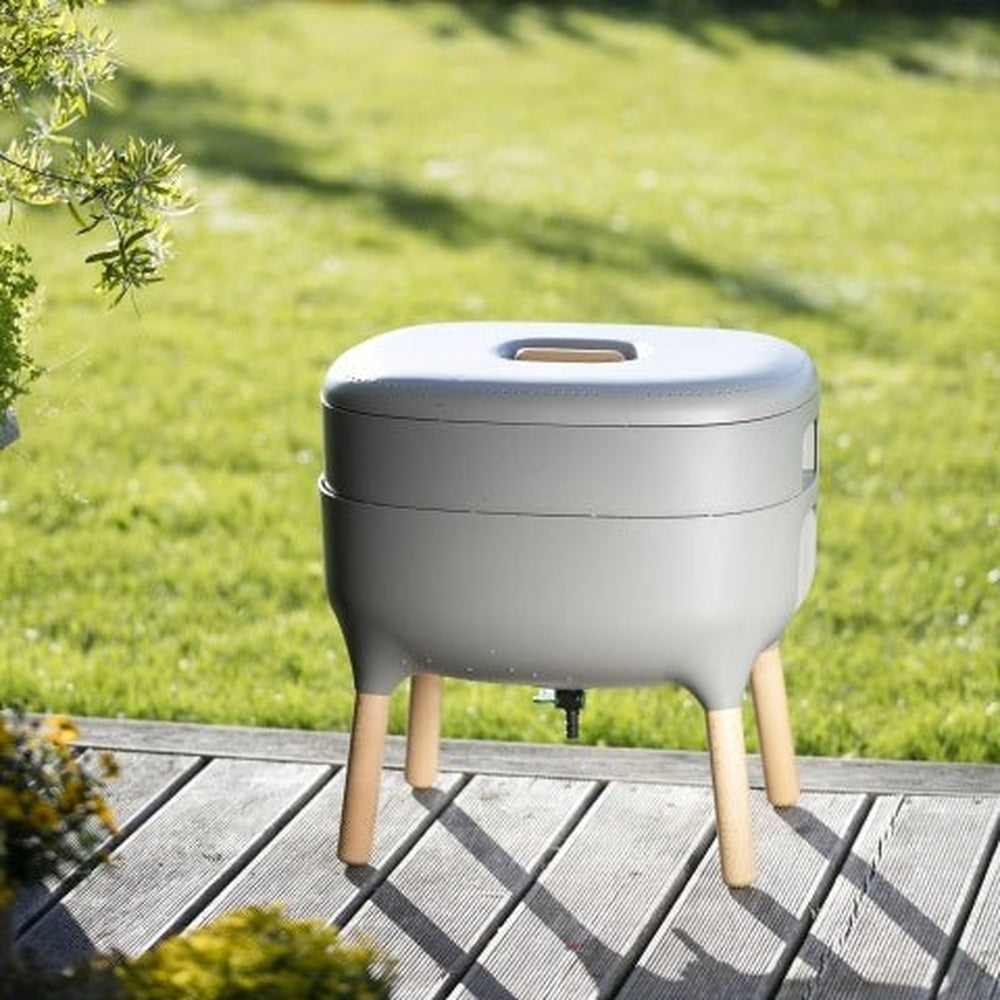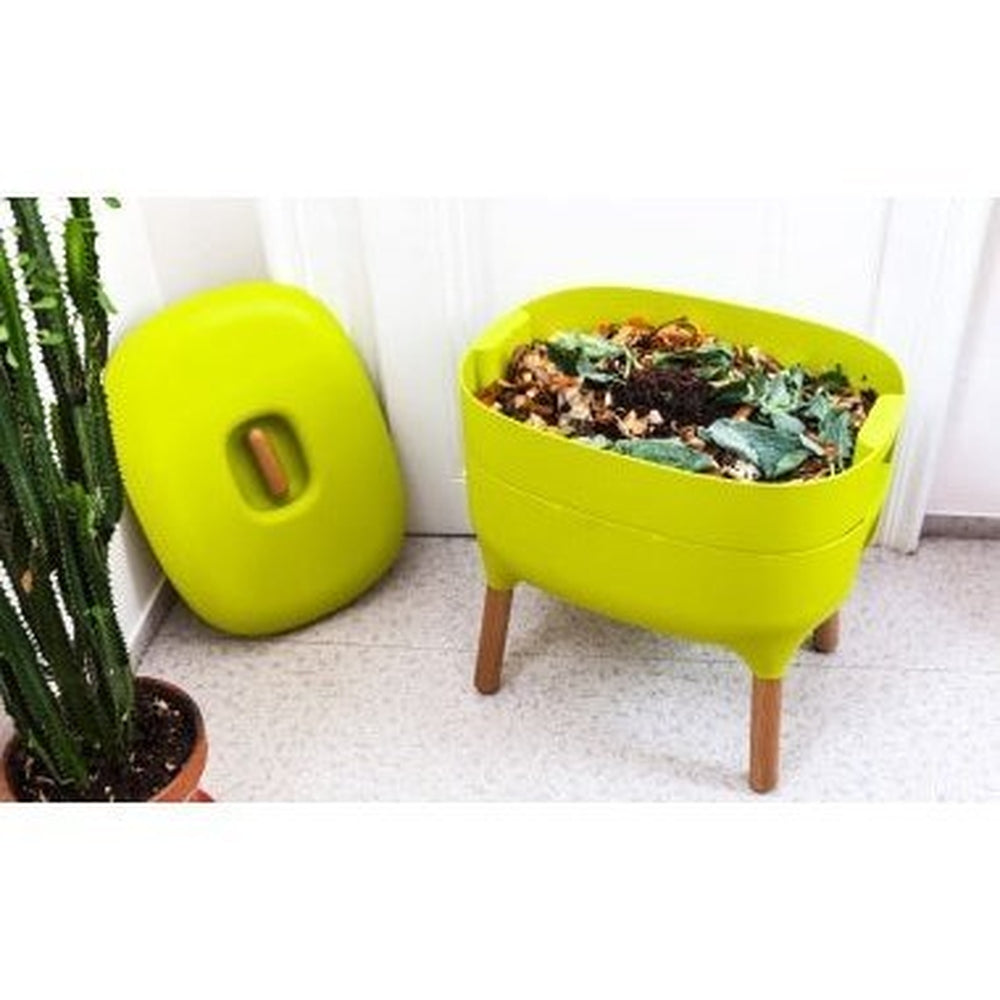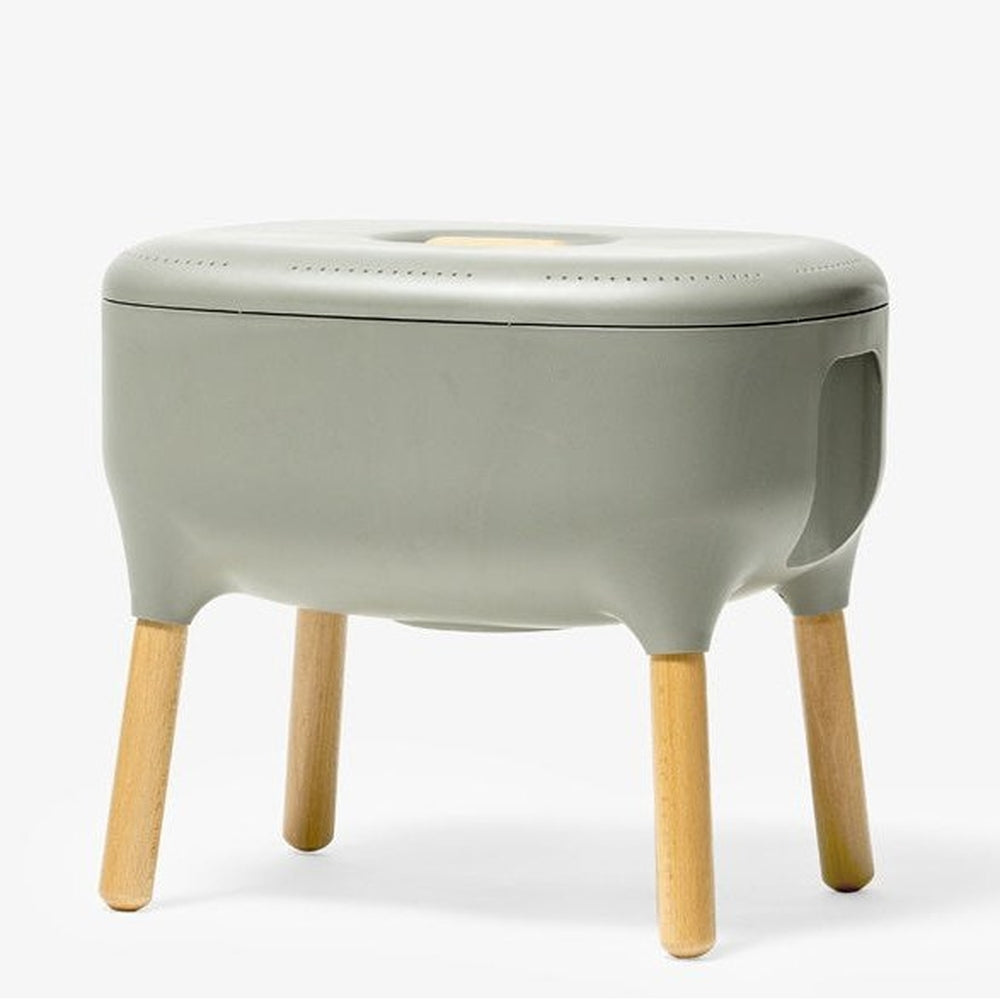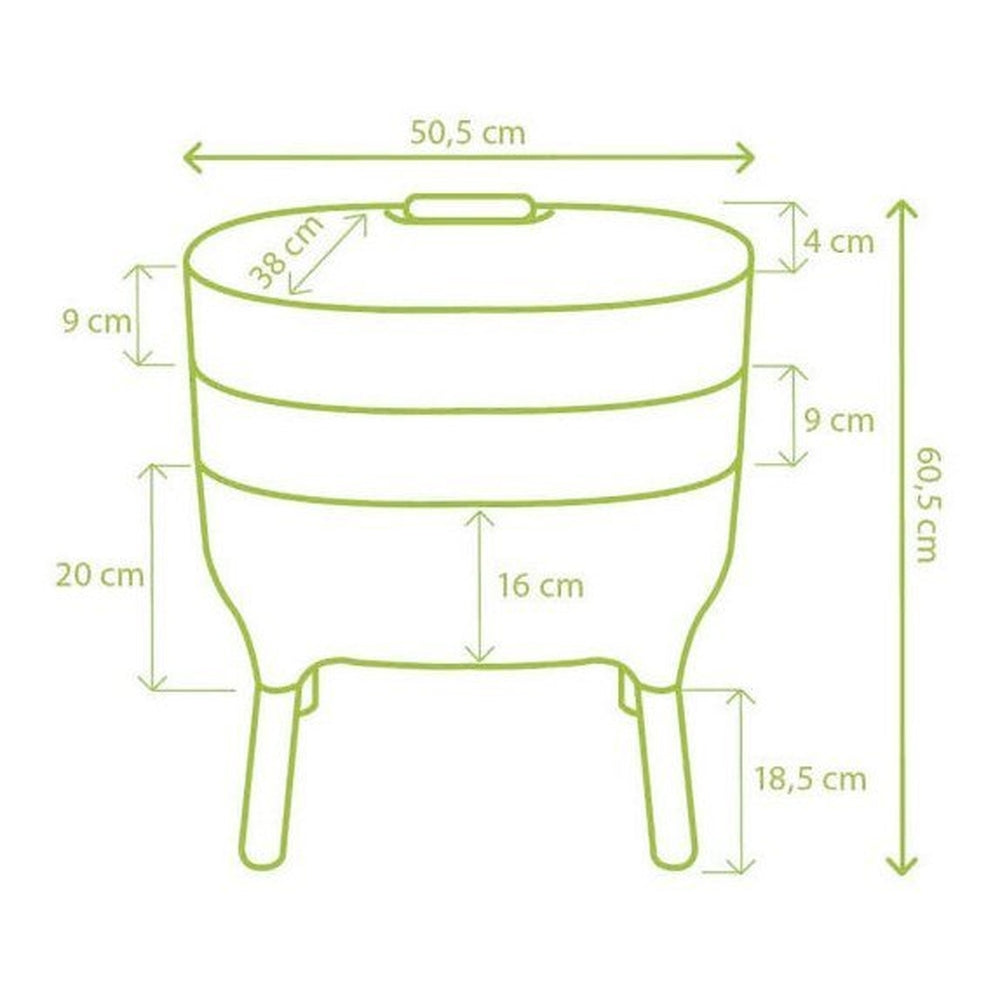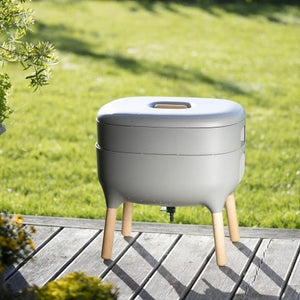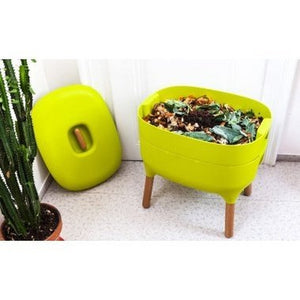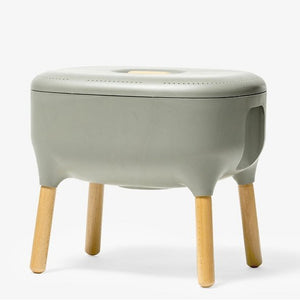Worm Farming Just Got Stylish!
Urbalive Worm Farm is a high-design indoor kit for composting kitchen bio waste with composting worms. Crafted by renowned Czech designer, Jiří Pelcl, this product won the prestigious Reddot Design Award.
Easy to use and odour-free, composting with Urbalive is straightforward with a bit of basic know-how. The kit contains trays for worms to transform food scraps into rich vermicompost, with a tight-fitting lid and a jug for collecting liquid worm tea. Highly potent enzymes and natural growth hormones make the vermicompost a perfect fertiliser for flower pots and planters. Plus, the worm tea liquid fertilise is pH neutral and is rich in nutrients and beneficial enzymes to help your plants flourish and protect them from pests.
This elegant, European-made worm farm is beautiful and functional and sits stylishly in your kitchen, balcony or back verandah and is perfect for small households and lower volumes of food waste.
Available in Anthracite and Green.
Made in Czech Republic.
What's Included in Box:
- Urbalive Base Unit, 2 trays and lid
- Wooden legs and screws
- Trowel
- Tap
- Jug for collecting the leachate
Dimensions:
Height 52cm, diameter 32cm
Weight 6.65kg
Materials:
Made from 100% recycled UV stabilised plastic
Top tips for keeping your worms happy:
-
Add equal amounts of Carbon & Nitrogen - Match the volume of food scraps [nitrogen] you are adding to the worm farm with shredded non-shiny paper and cardboard [carbon].
Rip up old envelopes, receipts, toilet rolls, egg cartons, and non-glossy advertising materials and add to the scraps to your kitchen caddy, as well as adding shredded newspaper and cardboard to your worm farm. You can also use old straw, dried leaves and rotted lawn clippings as a source of carbon.
-
Don’t overfeed - Worms can eat their own weight in food a day! Generally speaking, a compost worm weighs about 1 gram so it will eat 1g a day. If you start your worm farm with 1000 worms, you can feed them up to 1000g (1kg) of food a day. If you add more food than the worms can eat it may go rotten and create a toxic, smelly environment for the worms.
As a rule of thumb, add food when about half of the previous feed has been eaten, and spread it out in a layer of no more than 50mm thick. Add an equal amount of paper or cardboard and mix it through the food.
Cutting up food will allow the worms to break it down quickly before it starts to rot, which in turn will help avoid any smells.
The worm population will grow to meet the amount of food available, so regular feeding will keep your bin functioning well. They are not binge eaters, so can’t handle large amounts of food every now and then.
-
Where to keep your worm farm - Heat is the number one killer of worms so in our hot climate, make sure your worm farm is ALWAYS out of the sun, preferably in deep shade. A laundry, kitchen or garage is great, or under the house is perfect as the temperature is more constant. But it must be somewhere visible that you will remember to visit every day so you remember to feed your worms.
Worms like the same conditions as us so on hot days if you are hot, the worms will be too!
- ideally move the worm farm inside or find the coolest spot on your property
- use a worm blanket to insulate the worms.
- freeze a bottle of water or use a freezer brick and place on top of the worm blanket to create a natural air conditioning . Replace the bottle as it defrosts.
- cover a wet blanket or towel on the outside to create a cooler micro climate.
- don't feed the worms during extreme heat waves, as processing food scraps creates heat. Just make sure they have some damp compost or shredded paper or cardboard instead.
- Keep an eye on them – if the worms are massing in one spot or trying to escape the bin it can be a sign they are suffering heat stress.
-
Keep it Light and Airy - Worms breath through their skin so it is important to give the top few inches of your farm a fluff up every now and then with a fork to let the air in. Adding paper and cardboard also keeps the feed layer open and airy.
-
What do I feed my worms? - Worms can eat most things you can eat, with a few exceptions. Roughly 50% food scraps [nitrogen] and 50% paper or cardboard [carbon] is the magic formula for worm farm success.
-
Worms will eat precooked fruit and vegetable scraps, aged lawn clippings, tea leaves, coffee grounds, old cotton or linen clothing – almost anything organic.
Be aware many brands of tea bags are made from plastic, check your brand before adding to the worm farm. - Chopping your food scraps finely will speed up the process and avoid food rotting before the worms have a chance to eat it.
- Finely chop egg shells, or dry them out and crush to a powder – these will help balance the acidity in the bin. Crushed egg shells also add grit to the worm farm which helps the worms digestion.
- Shredded paper and cardboard, ripped egg cartons and ripped newspaper should all be a regular part of the worms diet.
- Spread food out over the surface when you add it, up to a maximum of 50mm thick – big piles of food or thick layers can putrefy before the worms eat it and will create a toxic environment in the farm.
-
Worms will eat precooked fruit and vegetable scraps, aged lawn clippings, tea leaves, coffee grounds, old cotton or linen clothing – almost anything organic.
-
What NOT to feed worms - Below are several types of food that should be avoided in order to maintain a clean, healthy environment for the worms living in your worm farm. These foods can prove detrimental to the worms' digestive systems, and decomposing unfinished leftovers can create an unsavoury smell.
-
Dairy - yoghurt, cheese, milks
-
Bread, rice, pasta, processed foods - you can add the odd crust or bits of cooked rice off the dinner plate, but don't add lots of starchy foods. Worms don't like them and they may go off or attract pests.
-
Animal products - bones, meat, fish, shellfish
-
Acidic foods - citrus, pineapple, garlic and onions - very small amounts finely chopped may be tolerated but they will usually eat these things as a last resort.
-
Spicy foods - worms are plain eaters, and don’t like spicy food such as chillies, chives, curries etc.
- Oils and fats - this can coat the worm's skin and prevent them from breathing.
- Chemicals - avoid any materials contaminated with toxic chemicals, such as sawdust from treated wood, paper towel used with cleaning sprays, disinfectant wipes etc.
- While worms love coffee grounds large amounts can emit ammonium, so if you have large quantities allow it to dry out and age first and mix well with other foods.
-
Dairy - yoghurt, cheese, milks
-
Other things to add to a Worm Farm - The carbon to nitrogen ratio in your worm farm is important – food scraps are high in nitrogen, so need to be balanced up with carbon such as paper, cardboard or dry leaves.
-
Paper and cardboard are a great cure all in the worm farm. Add equal amounts off paper or cardboard to the amount food scraps you are adding – this keeps the carbon content up and your farm light and airy.
-
Eggshells are a great source of calcium, but are hard for worms to eat so crush them finely – you can put your eggshells in the oven or on the windowsill to dry them out, then crush into a fine powder to use on your worm farm.
- Worm Farm Conditioner helps to balance your worm farm by adding a complete range of minerals which improves worm health and the efficiency of your farm. These conditioners also add valuable minerals to the nutrient rich castings and worm juice. It is pH neutral and, unlike lime based powders, will not make your worm system too alkaline.
-
Paper and cardboard are a great cure all in the worm farm. Add equal amounts off paper or cardboard to the amount food scraps you are adding – this keeps the carbon content up and your farm light and airy.
-
In hot weather you may want to sprinkle with water to help regulate the heat, and make sure the contents don’t dry out
If you have a worm blanket keep it damp but not wet in hot weather. It is also good practice to moisten cardboard and paper with water when you add it.



